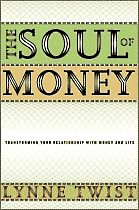In Canada, linkage regulations similar to the Hatch-Waxman Act in the U.S. ensure that generics manufacturers have to address relevant patents listed on the Patent Register (the analog to the Orange Book) if they want to market their product prior to the expiry of listed patents. Generics manufacturers can do so either by accepting the terms of the patents, or by filing a Notice of Allegation (NOA) alleging, amongst other things, that they will not infringe the patent or that the patent is invalid.
Three recent decisions litigated in this context contain important notes for pharma companies, biotech companies, generics companies and their patent attorneys and agents.
The Patent Act (post-1996) Imposes a Duty of Candour and Good Faith. In Lundbeck Canada Inc. et al v. Ratiopharm Inc., Lundbeck’s patent was invalidated because the patent agents failed to “fully and fairly describe” the prior art in responding to an obviousness rejection raised by the patent examiner. This decision may take on a broader impact, particularly if it is interpreted to require Canadian applicants to affirmatively inform examiners of aspects of the prior art that are both favorable and unfavorable.
Formulation Patents Must Claim All Medicinal Ingredients. In Bayer Inc. v. Canada (Minister of Health) et. al., Bayer’s patent was held to be ineligible for listing on the Patent Register, despite reading on the product. Where the approved product contains a formulation with more than one medicinal ingredient, only patents that claim formulations containing all of the approved medicinal ingredients may be listed on the Patent Register, regardless of whether the product is covered by the patent claims.
Disclaimers Can Be Validly Filed After Receipt of a NOA. In sanofi-aventis Canada Inc. v. Hospira Healthcare Corporation, sanofi responded to Hospira’s NOA by filing a disclaimer in respect of a portion of one of sanofi’s listed patents. Hospira argued that the Court should consider the sanofi patent as it read on the date the NOA was served and not as it read after the disclaimer was filed. Although the court held (in favor of sanofi) that the patent should be read as of the date of the hearing, it also held that sanofi’s particular disclaimer was invalid because the patentee had not unequivocally testified that the disclaimer was a result of claiming too broadly in the patent as issued. Such an admission was necessary to the validity of the disclaimer. The court also held that having attempted a disclaimer, sanofi could not subsequently assert against Hospira the portions of the patent it had attempted to disclaim.
Thanks to Kavita Ramamoorthy and the whole Life Sciences team.
Today’s post is reposted from The Cross-Border Biotech Blog by Guest Barista Jeremy Grushcow, a corporate lawyer at the Canadian law firm Ogilvy Renault LLP.















